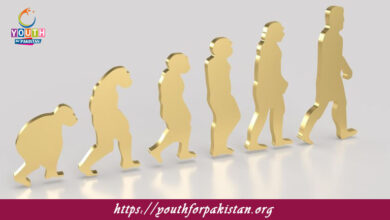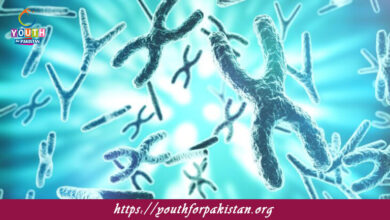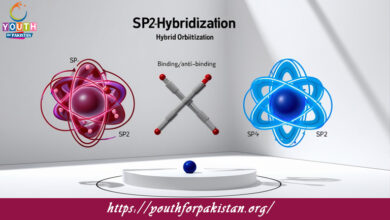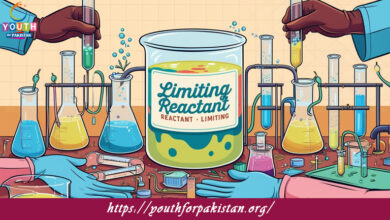Oxidative Phosphorylation MDCAT MCQs with Answers
Welcome to the Oxidative Phosphorylation MDCAT MCQs with Answers. In this post, we have shared Oxidative Phosphorylation Multiple Choice Questions and Answers for PMC MDCAT 2024. Each question in MDCAT Biology offers a chance to enhance your knowledge regarding Oxidative Phosphorylation MCQs in this MDCAT Online Test.
Which of the following processes occurs in the mitochondria?
a) Glycolysis
b) Citric acid cycle
c) Oxidative phosphorylation
d) Fatty acid synthesis
What is the primary function of oxidative phosphorylation?
a) Synthesis of proteins
b) Production of ATP
c) Breakdown of carbohydrates
d) Conversion of amino acids
Which component of the electron transport chain is embedded in the inner mitochondrial membrane?
a) Cytochrome c
b) NADH dehydrogenase
c) ATP synthase
d) Ubiquinone
What is the main purpose of the electron transport chain in oxidative phosphorylation?
a) To synthesize fatty acids
b) To generate a proton gradient
c) To produce NADH
d) To convert glucose to pyruvate
Which molecule acts as the final electron acceptor in oxidative phosphorylation?
a) Oxygen
b) Carbon dioxide
c) Water
d) NAD+
What is the role of ATP synthase in oxidative phosphorylation?
a) To transport electrons
b) To generate ATP from ADP and inorganic phosphate
c) To reduce oxygen to water
d) To oxidize NADH
Which complexes in the electron transport chain pump protons across the inner mitochondrial membrane?
a) Complexes I, II, and III
b) Complexes I, III, and IV
c) Complexes II, III, and IV
d) Complexes I, II, and IV
What is the primary source of electrons for the electron transport chain?
a) ATP
b) NADH and FADH2
c) Glucose
d) Oxygen
Which molecule is reduced to water at the end of the electron transport chain?
a) Oxygen
b) NADH
c) ATP
d) Ubiquinone
In which part of the mitochondrion does oxidative phosphorylation occur?
a) Matrix
b) Outer membrane
c) Inner membrane
d) Intermembrane space
What is the role of ubiquinone (coenzyme Q) in the electron transport chain?
a) To transfer electrons from complex I and II to complex III
b) To synthesize ATP
c) To oxidize NADH
d) To reduce oxygen to water
Which complex in the electron transport chain contains cytochrome c?
a) Complex I
b) Complex II
c) Complex III
d) Complex IV
What is the effect of rotenone on oxidative phosphorylation?
a) Inhibits ATP synthase
b) Blocks complex I
c) Blocks complex IV
d) Inhibits complex II
Which type of gradient is created across the inner mitochondrial membrane during oxidative phosphorylation?
a) Voltage gradient
b) Chemical gradient
c) Electrochemical gradient
d) Temperature gradient
What is the primary function of complex IV in the electron transport chain?
a) To transfer electrons to ubiquinone
b) To pump protons into the intermembrane space
c) To reduce oxygen to water
d) To transfer electrons from NADH to FADH2
Which complex is also known as cytochrome bc1 complex?
a) Complex I
b) Complex II
c) Complex III
d) Complex IV
What drives the synthesis of ATP in oxidative phosphorylation?
a) The breakdown of glucose
b) The electrochemical proton gradient
c) The reduction of NADH
d) The oxidation of FADH2
What happens to the energy released from electron transport?
a) It is converted into heat
b) It is used to phosphorylate ADP to ATP
c) It is used to reduce NAD+ to NADH
d) It is stored in the form of glucose
Which molecule is oxidized in complex I of the electron transport chain?
a) FADH2
b) NADH
c) Ubiquinone
d) Cytochrome c
Which complex is responsible for transferring electrons from FADH2 to ubiquinone?
a) Complex I
b) Complex II
c) Complex III
d) Complex IV
What is the role of complex II in oxidative phosphorylation?
a) To transfer electrons from NADH to ubiquinone
b) To transfer electrons from FADH2 to ubiquinone
c) To pump protons across the membrane
d) To reduce oxygen to water
Which of the following inhibits ATP synthase?
a) Cyanide
b) Oligomycin
c) Rotenone
d) Antimycin A
What is the effect of cyanide on oxidative phosphorylation?
a) Inhibits ATP synthase
b) Blocks complex IV
c) Inhibits complex III
d) Inhibits complex I
Which of the following is a proton gradient pump in the electron transport chain?
a) ATP synthase
b) Ubiquinone
c) Complex I
d) Cytochrome c
How many ATP molecules are typically produced from one NADH molecule through oxidative phosphorylation?
a) 1
b) 2
c) 3
d) 4
How many ATP molecules are typically produced from one FADH2 molecule through oxidative phosphorylation?
a) 1
b) 2
c) 3
d) 4
Which process directly generates ATP in oxidative phosphorylation?
a) Electron transport chain
b) Chemiosmosis
c) Glycolysis
d) Citric acid cycle
What is the primary source of protons for the electrochemical gradient in oxidative phosphorylation?
a) Water
b) NADH
c) FADH2
d) Cytochrome c
Which of the following describes the process of ATP generation via oxidative phosphorylation?
a) Substrate-level phosphorylation
b) Oxidative phosphorylation
c) Fermentation
d) Photophosphorylation
In which compartment of the mitochondrion does ATP synthesis occur?
a) Matrix
b) Intermembrane space
c) Outer membrane
d) Inner membrane
What is the role of cytochrome c in the electron transport chain?
a) To transfer electrons from complex I to complex III
b) To transfer electrons from complex III to complex IV
c) To transfer protons across the inner mitochondrial membrane
d) To reduce oxygen to water
What is the primary purpose of the proton gradient generated during oxidative phosphorylation?
a) To drive the reduction of NAD+
b) To enhance enzyme activity
c) To facilitate the synthesis of ATP
d) To degrade fatty acids
Which of the following best describes the chemiosmotic theory?
a) The movement of electrons through a chain generates a proton gradient that drives ATP synthesis
b) ATP is synthesized directly from the breakdown of glucose
c) Protons move directly from NADH to ATP synthase
d) Oxygen is used to directly produce ATP
Which complex in the electron transport chain does not pump protons?
a) Complex I
b) Complex II
c) Complex III
d) Complex IV
What effect does uncoupling agents have on oxidative phosphorylation?
a) Increase ATP production
b) Decrease ATP production by dissipating the proton gradient
c) Enhance electron transport
d) Stimulate ATP synthase
Which of the following is a common uncoupling agent?
a) Cyanide
b) Oligomycin
c) Dinitrophenol (DNP)
d) Rotenone
What happens to the proton gradient when ATP synthase is inhibited?
a) It increases
b) It decreases
c) It remains unchanged
d) It reverses direction
Which component of the electron transport chain directly interacts with molecular oxygen?
a) Complex I
b) Complex II
c) Complex III
d) Complex IV
Which complex is also known as cytochrome c oxidase?
a) Complex I
b) Complex II
c) Complex III
d) Complex IV
Which electron transport chain component is mobile and transfers electrons between complexes?
a) Cytochrome c
b) NADH
c) Ubiquinone
d) ATP synthase
Which complex is responsible for transferring electrons from NADH to ubiquinone?
a) Complex I
b) Complex II
c) Complex III
d) Complex IV
Which of the following processes occurs directly in the mitochondrial matrix?
a) Electron transport chain
b) ATP synthesis
c) Citric acid cycle
d) Proton pumping
If you are interested to enhance your knowledge regarding Physics, Chemistry, Computer, and Biology please click on the link of each category, you will be redirected to dedicated website for each category.





